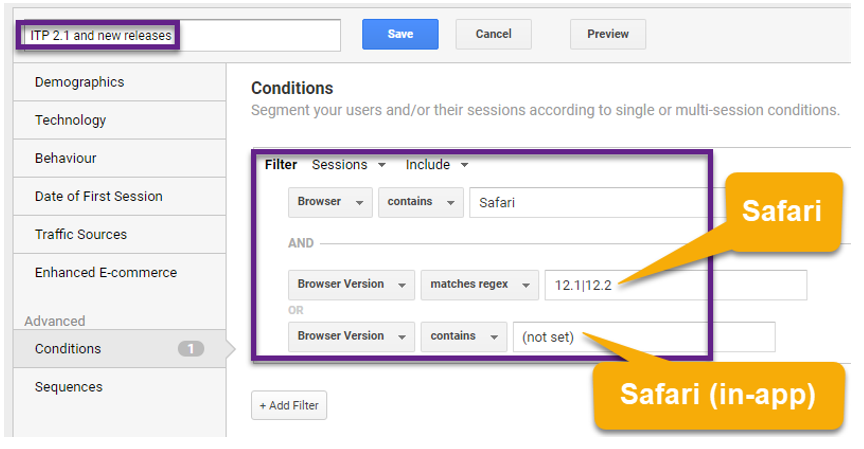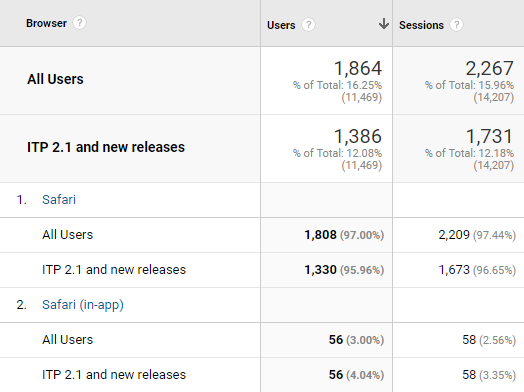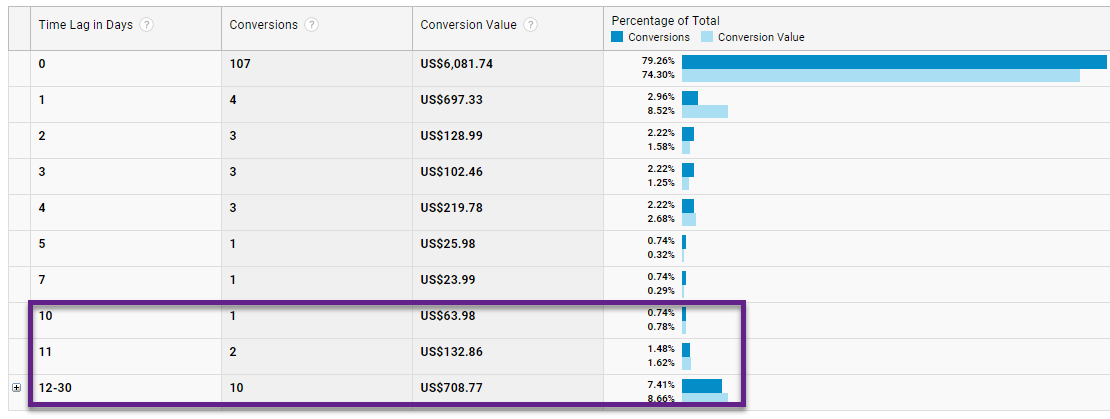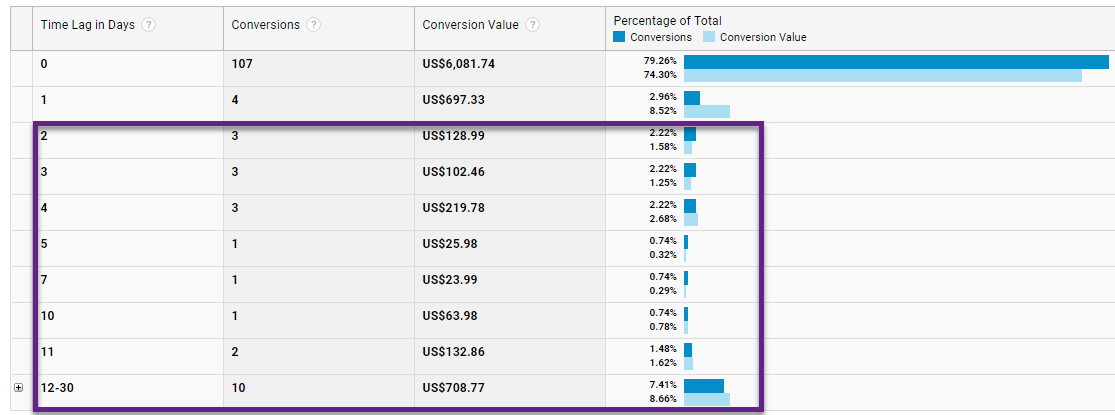What is the percentage of Safari users on your site? Read this guide to learn more about Intelligent Tracking Prevention and how it impacts your Google Analytics data.
Back in 2017, Intelligent Tracking Prevention (ITP) was introduced by Apple. Until earlier this year, most companies didn’t worry so much as ITP was primarily aimed at blocking third-party cookies. However, with version 2.1 and 2.2 being released, the game has definitely changed.
The working of first-party cookies is now impacted as well.
![]()
In this blogpost you will learn about the background of ITP and what impact Intelligent Tracking Prevention might have on your Google Analytics data.
Table of Contents
- What is Intelligent Tracking Prevention
- First-Party and Third-Party Cookies
- Intelligent Tracking Prevention (version 1.0 to 2.2)
- Google Analytics Impact Analysis
- Workarounds
- Concluding Thoughts
I don’t recommend doing so, but skip chapter one to three if you are only interested in the practical implications of ITP.
What is Intelligent Tracking Prevention
Intelligent Tracking Prevention (ITP) is a (relatively) new feature introduced by WebKit in 2017. It’s an open-source browser engine that powers Safari’s web browsers and reduces cross-site tracking by further limiting cookies and other website data.
In short, the feature aims to further protect user’s online privacy by changing how Apple Safari’s browsers deal with cookies. That’s at least what they say. ;-)
First-Party and Third-Party Cookies
Let’s get clear on first-party vs third-party cookies first before diving into the latest developments.
First of all both cookies are different from each other in the way they are created and used. They are the same type of files.
First-Party Cookies
First-party cookies are created by the domain the user is visiting, e.g. in my case Online-Metrics.com. These types of cookies are generally considered safe as they help provide a better user experience. Also, they keep the session open which is very important. In that case, the browser can remember important information, e.g. the status of shopping carts, usernames and passwords, and many more.
Third-Party Cookies
Third-party cookies are cookies created by domains other than the domain the user is visiting. So those are not from Online-Metrics.com in this case. There are many different types of these cookies, a few common ones are listed below:
- Retargeting cookies.
- Social Media buttons.
- Chat Popups.
Three Key Differences
- First-party cookies are set by the publisher’s web server or loaded JavaScript on the site. Third-party cookies can be set by a third-party server by specific code loaded on the website.
- First-party cookies are only accessible via the domain that initially created it. Third-party cookies are accessible on any website by loading the third-party server’s code.
- First-party cookies are supported by all browsers, but the user can block or delete those cookies (which might lead to a bad user experience). Third-party cookies are supported by all browsers, but many browsers (including Safari) are blocking the creation of those cookies on default.
![]()
ITP 1.0 and 1.1
As mentioned in the introduction, the first version of ITP was released back in June 2017. There was some buzz at that time, but less companies where impacted as the focus was primarily on blocking third-party cookies.
It certainly impacted a wide range of AdTech companies and how they could built user profiles across multiple websites through third-party cookies. However, the majority of companies – also in relation to using Analytics data – were safe. Simply because those solutions rely on first-party cookies.
ITP 2.0
Since the release of ITP 2.0 (June 2018), third-party cookies are fully blocked on default. The 24-hour grace period (still available in ITP 1.0 and 1.1) was scrapped.
It means that websites can no longer leave cookies in the user’s browser, e.g. for retargeting and attribution purposes. Companies accessing their first-party cookies in a third-party context are clearly impacted.
ITP 2.1
In February 2019, ITP 2.1 was released. Most important change in the update was decreasing the first-party cookie expiration time.
Cookies created via the JavaScript document.cookie API (even first-party cookies) are set to expire in seven days, regardless of their existing expiry date.
This can have a big impact on many companies using Marketing Technology tools, including Google Analytics. The first-party cookies are set via the GA JavaScript library and those cookies will expire after seven days, unless the cookie is updated in that period.
The default expiration period of analytics.js is 2 years, so this is huge!
Apple stated earlier this year that the beta releases of iOS 12.2 and Safari 12.1 on macOS High Sierra and Mojave include an updated version 2.1 of Intelligent Tracking Prevention (ITP).
“A user on Safari visiting your website on Day 1 and returning on Day 9 will be seen as a new user.”
ITP 2.2
Now let’s discuss where we currently are, ITP 2.2. Here is the official release article on WebKit.
It was released around May 13 on iOS 12.3.
ITP 2.2 further reduces this cookie life (7 days on ITP 2.1) to just 1 day if the following two conditions are true:
- A domain classified with cross-site tracking capabilities was responsible for sending the user to the current webpage (large ad networks are most probably classified this way, Google and Facebook included).
- The final URL of the navigation has a query string and/or a fragment identifier.
“A user on Safari visiting your website on Day 1 and returning on Day 3 will be seen as a new user if both conditions are met.”
Make sure to read all these privacy related blogposts on WebKit if you want to know about all the technical details of ITP. Let’s focus now on the actual impact on your data in Google Analytics.
Google Analytics Impact Analysis
In the last few months I have had an extensive look at ITP and the impact it has on the stats in Google Analytics.
Now we will look into one analysis I recommend replicating on your data. For demonstrating purposes I will use the GA Demo account.
Prerequisites
- Ecommerce website: Ecommerce transaction and/or revenue tracking.
- Non-Ecommerce website: goal tracking for your primary conversion.
In general, always make sure you have an accurate setup of Google Analytics.
Make a note of the release dates of ITP 2.1 and 2.2:
- Release date ITP 2.1 – March 11, 2019 (verified in several GA accounts).
- Release date ITP 2.2 – May 13, 2019 (verified in several GA accounts).
You will need these dates a bit later.
Impact Analysis – ITP 2.1
The Google Demo Store is an Ecommerce site with Enhanced Ecommerce tracking. That’s why I can directly use the “revenue” metric for this impact analysis.
Step 1: Calculate traffic and revenue from Safari users.
You want to make this analysis on your most recent data and aim for a minimum of 100 to 200 transactions within this group.
Even if I use four full weeks of data (June 11 to July 8, 2019), the number of transactions is below 100. It’s ok as this is just for demonstrating purposes.
Navigate to: Audience > Technology > Browser & OS.

Filter on Safari and make a note of the stats:
- Users: 16%
- Sessions: 14%
- Revenue: 79% (!)
This is huge as “revenue” is five times higher as number of “users”.
Step 2.1: Define ITP 2.1 (2.2) segment in Google Analytics.
Here is the segment you need to create:

Keep in mind that you might need to upgrade the “Browser Version” in the future to reflect any changes to ITP and its impact.
Step 2.2: Determine Upgrade Percentage.
Now it’s time to find out what percentage of users have already upgraded to the browser version(s) that are impacted by ITP.
Therefore we need to apply both the default segment as well as the custom one. In this case I use the time period: July 1 to July 7, 2019.

The data shows that 74% of all users and 76% of all sessions are affected by ITP.
- Users (74%): ((1,386 / 1,864)*100%).
- Sessions (76%): ((1,731 / 2,267)*100%).
Step 3: Determine Revenue Percentage after more than 7 days.
- Time Period (prior to release ITP 2.1): 10 January to 10 March, 2019.
- Time Lag report (Conversions > Multi-Channel Funnels > Time Lag).
- Conversion = Transaction.
- Look-back window defaults to 30 days.

Revenue after more than 7 days = Conversion Value = 0.78% + 1.62% + 8.66% = 11%. This is very low as many visitors convert within a very short time frame.
Extending the look-back window to 90 days would increase this percentage to 15%, which is still very low.
For this analysis we will use the highest value (15%), which illustrates maximum impact based on highest look-back window in GA.
Step 4: Calculate impact on revenue.
This is the most important step and you need to be careful to use the right numbers derived in the previous steps.
- Safari browsers are good for 79% of total revenue.
- 74% of this site’s Safari users have upgraded to ITP 2.1. Old devices and legacy iOS versions will prevent this number from getting to 100%.
- 79% (total site revenue) X 74% (ITP 2.1 Safari users) = 58%.
- Thus, 58% of current revenue is coming from ITP 2.1 Safari users.
- 15% of revenue happens after 7 days (Time Lag report).
- 58% (revenue from Safari ITP 2.1 users) X 15% = 9%.
- Approximately 9% of revenue in GA (that is coming in after 7 days in Safari) may not be allocated to the right channels.
These factors determine the eventual impact:
- Percentage of users that have upgraded to a browser version impacted by ITP. // higher value means higher impact
- Percentage of revenue on Safari. // higher value means higher impact
- Percentage of revenue coming in after 7 days in Safari. // higher value means higher impact
Impact Analysis – ITP 2.2
We can do this analysis much quicker as we can re-use the data from steps 1 and 2 described above.
Data from step 1 and 2:
- Safari browsers = 79% of total revenue.
- 74% of this site’s Safari users have upgraded to ITP 2.2.
- Thus, 58% of current revenue is coming from ITP 2.2 Safari users.
Step 3: Determine Revenue Percentage after more than one day.
- Time Period (prior to release ITP 2.1): 10 January to 10 March, 2019.
- Time Lag report (Conversions > Multi-Channel Funnels > Time Lag).
- Conversion = Transaction.
- Look-back window defaults to 30 days.

Revenue after more than one day = Conversion Value = 100% – 74.30% – 8.52% = 17%. This is still relatively low as many visitors convert within a very short time frame (less than a day).
Extending the look-back window to 90 days would increase this percentage to 20%.
For this analysis we will use the highest value (20%), which illustrates maximum impact based on highest look-back window in GA. And, we assume that all sites sending traffic fall under the guidelines of ITP 2.2.
Step 4: Calculate impact on revenue.
This is the most important step and you need to be careful to use the right numbers derived in the previous steps.
- Safari browsers are good for 79% of total revenue.
- 74% of this site’s Safari users have upgraded to ITP 2.2. Old devices and legacy iOS versions will prevent this number from getting to 100%.
- 79% (total site revenue) X 74% (ITP 2.2 Safari users) = 58%.
- Thus, 58% of current revenue is coming from ITP 2.2 Safari users.
- 20% of revenue happens after one day (Time Lag report).
- 58% (revenue from Safari ITP 2.2 users) X 20% = 12%.
- Approximately 12% of revenue in GA (that is coming in after one day in Safari) may not be allocated to the right channels.
Based on both scenarios, the potential misallocation of revenue increases from 9 to 12%. Please keep in mind these are all estimations.
Workarounds
A lot has been said or written about possible workarounds and solutions to counter-effect the implications of ITP.
Ranging from simple client-side solutions to complicated server-side efforts.
- Any easy way of sidestepping ITP is likely not working anymore after the next update.
- Workarounds are both time-consuming and expensive to implement.
- Some suggested solutions – such as 302 redirects to pages without parameters – are detrimental to the company and in this case might negatively impact SEO.
Investing into cookie-less solutions is likely to be more beneficial.
Notes:
- Cookie Saver – not yet tried – seems like a very promising solution.
- TraceDock (company in The Netherlands) is working on solutions mitigating the effects of ITP.
- The Google Analytics evolution into Web and App properties doesn’t provide a solution for ITP (yet).
Concluding Thoughts
This case study illustrates a potential, negative impact on Google’s Demo Store’s data because of large share of Mobile/Safari users and revenue.
This is partly negated because of high percentage of users converting within a short timeframe. Currently – as a rough estimate – 9 to 12% of all revenue might be improperly attributed (wrong channel). Eventually, this might rise to 15% of even higher if Mobile share increases over time. And what about changes to Firefox or within the Google sphere? All not yet fully clear.
Channel performance (outside of Direct) is most probably better than what the Google Analytics data is currently showing. Google could consider lowering channel-specific targets.
Here are, once again, three important factors that determine the eventual impact of ITP (higher values indicate increased impact):
- Percentage of users that have upgraded to a browser version impacted by ITP.
- Percentage of revenue on Safari.
- Percentage of revenue coming in after one or seven days in Safari.
Last thing, there are a ton of other analysis you could potentially make in relation to ITP. I just wanted to share an important one related to revenue and macro conversion impact.
Let’s see what the future brings!
Now it’s your turn. What are your thoughts on Intelligent Tracking Prevention? Did you already analyze the effect on your GA data set and how do you cope with it?
One last thing... Make sure to get my automated Google Analytics 4 Audit Tool. It contains 30 key health checks on the GA4 Setup.
Great article!
Do you see any new features with ITP 2.3
And do you see any consequences with Firefox Enhanced Tracking Protection
Thanks.
Hi there,
Thanks for the heads up! I haven’t explored this in great detail yet, but please read this article from Simo (https://www.simoahava.com/analytics/itp-2-1-and-web-analytics/) to get an update on ITP 2.3. With regards to Firefox – very minimal impact as this is targeted towards third-party cookies.
Best,
Paul
I used Cookie Saver (I wrote an article on how to implement it with GTM).
It’s a really smart solution
Hi Matteo,
Thanks for your comment, feel free to share it in the comments section and I might be able to embed it in the post.
Cheers,
Paul
Sure :)
This is the link to my article https://www.tagmanageritalia.it/how-to-install-cookie-saver-and-save-you-from-itp-and-cookiegeddon/
Hi Matteo, thanks for this. Where are these conversions being attributed to if not to Safari? Thanks
Hi Sally,
Conversions will be attributed to Safari, but to a different medium (often “Direct” traffic).
Best,
Paul
Maybe I overthink this — Isn’t the hypothesis the opposite?
Focusing on evt post 1 day (in ITP 2.2) to evaluate how much is off.
Could it be possible to consider that people who convert after more than 1 day have a higher likelihood of having the correct source/medium attributed to them since they visited multiple times to keep their cookie alive. And that almost all traffic coming from ITP impacted browsers converting in a single day will have the wrong source/medium attached to it (or at least should/could be omitted for MCF analyses)?
Interesting thought Glenn! This could be partly true, we never know exactly unless we carefully investigate (based on historical data).
However, a large group of these visitors might come back the second time after one or twee weeks maybe. Cookie issues are very common in that case.
I’m not sure you are using the best metrics for this.
I belive that clearing down of cookies would result in escalated visitors. You can therefor index visits per visitor in safari vs chrome to see the real effect.
Hi Oliver,
That sounds like another way of addressing it and I think both methods carry their value in learning more about it.
Best,
Paul